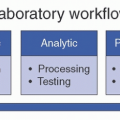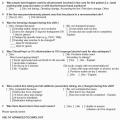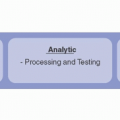Despite notable advances in burn prevention and wound care, burns remain a substantial cause of morbidity and mortality. Worldwide, 180 000 people die annually from flame burns alone, with scald, electrical, and chemical burns contributing to additional death and disability.
1 Developing nations are disproportionately affected due to limited prevention measures and access to high-quality wound care, with child mortality in these countries seven times higher than in high-income nations.
1 Even with advanced prevention and treatment modalities, over 486 000 burn injuries were medically treated in the United States (US) in 2016, including 40 000 necessitating hospital admission and 3275 resulting in death.
2 Mortality from burn injuries reported in the United States between 2009 and 2018 was 3.0% overall. Burn types in the United States reflect those worldwide, with flame and scald injury predominating at 40.6% and 31.4% of all burns, respectively.
3 As such, burn wound literature and guidelines primarily pertain to flame, and to a lesser degree scald, types.
While total body surface (TBSA) of the burn and inhalation injury have the greatest impact on mortality risk, a number of additional factors increase burn mortality risk, including advanced age and preexisting comorbidities.
4 Most risk factors increase patients’ susceptibility to infectious complications,
4,5 which are responsible for 42%-65% of burn deaths
6,7,8 and are associated with mortality rates three to six times higher than those without infection.
9,10 Pneumonia occurs in 20% of those with inhalation injury and in 65% who require mechanical ventilation.
11 Urinary tract infection (UTI) and cellulitis, the second and third most prevalent complications, are relatively less common but substantial contributors to morbidity and mortality.
3Infection prevention, diagnosis, treatment, and control in burn patients present unique challenges given the resulting state of immune compromise. Virulent pathogens and modes of transmission abound in the hospital setting, particularly in burn intensive care units (BICUs), as many patients require lengthy hospital stays, frequent dressing changes, Foley catheters, peripheral or central intravenous (IV) catheters, and mechanical ventilation.
6,12 In addition to destroying the skin’s physical barrier, burns trigger metabolic and immunologic responses
13,14,15,16 that predispose patients to infection and cause signs and symptoms that mimic infection.
17,18,19 Such responses can also alter antimicrobial pharmacokinetics,
20,21 further complicating management. Overuse and underdosing of antimicrobials contribute to the growing problem of antimicrobial resistance,
6 with rates of multidrug resistance for some pathogens reaching over 50%.
9,22,23 It is important to understand the unique characteristics of burn wounds and associated infections to provide appropriate patient care while practicing antimicrobial stewardship to control the emergence of multidrug-resistant (MDR) pathogens.
6
PHYSIOLOGIC RESPONSE TO BURN INJURY
At the site of burn wound injury, dead tissue constituting the eschar is surrounded by a tenuous area of vascular stasis and hypoperfusion within a wider zone of hyperemia in response to injury.
24 Hypercoagulability and oxidative stress lead to thrombosis and endothelial cell damage, respectively, while increased vascular permeability produces edema. As blood flow to and from the area is compromised, toxic cytokines and free radicals accumulate,
13 killing initially viable tissues and fueling an inflammatory and hypermetabolic response. Prompt surgical excision of the burn eschar has become the standard of care, as this decreases mortality by removing much of the inflammatory stimulus and nidus for infection.
25,26,27Systemic inflammation in response to burn injury can be profound, leading to multiorgan failure or shock, and is closely followed by a compensatory anti-inflammatory response.
7,24 The resulting immune dysregulation produces a state of immunocompromise and complicates the diagnosis of systemic infection.
7,24 Hyperinflammation can impair physiological barriers in multiple organ systems, allowing inflammatory cells, reactive oxygen species, and other physiologic insults to contribute to multiorgan dysfunction or failure.
15 For example, postburn ileus and changes in intestinal permeability enable bacterial translocation that can lead to sepsis, particularly in burns associated with concomitant alcohol use.
24,28A multitude of immune cells and inflammatory mediators contribute to postburn immune dysregulation. Severe burns impair the chemotaxis and function of monocytes, macrophages, and neutrophils responsible for clearing dead tissue, bacteria, and cytotoxins.
29,30 In addition to immune dysregulation, burn injury induces hypermetabolism
correlating with the extent of burn injury that contributes to mortality
14 and can persist for up to 3 years.
31 This hypermetabolic response contributes to multiorgan dysfunction by increasing systemic inflammation, promoting skeletal and cardiac muscle catabolism, and increasing the risk for sepsis.
32,33 Catecholamines, stress hormones, and cytokines play a significant role by inducing insulin resistance and alterations in glycolysis, proteolysis, and lipolysis; the result is loss of body mass, impaired wound healing and immune function, and greater risk for infection.
32,33
PATHOGENESIS AND EPIDEMIOLOGY OF BURN-ASSOCIATED INFECTIONS
Despite surgical excision of the eschar, burn wounds are colonized by Gram-positive skin flora within 48 hours of injury, by Gram-negative bacteria within 1 week, and lastly by fungi after roughly 2 weeks postburn.
34,35,36,37 While
Staphylococcus aureus predominates in the first week following injury, it is surpassed by
Pseudomonas aeruginosa by week 3.
34 Median time from admission to isolation of
Streptococcus spp.,
S aureus, and
Enterococcus spp. from burn patients may be 2, 3, and 9 days, respectively, compared with 11.5, 18, and 26 days for isolation of
Enterobacteriaceae,
Pseudomonas spp., and
Acinetobacter spp., respectively.
38 P aeruginosa is rarely found within 7 days of admission but may colonize over half of patients after 1 month of hospitalization.
39 Colonization progresses to infection in many cases, as patients’ compromised immune systems are challenged by nosocomial pathogens, frequent wound dressing changes, IV and bladder catheters, and mechanical ventilation.
12 Hospital-acquired infection is common among burn patients, but reported rates vary widely, likely reflecting variation in the severity of burns treated at different institutions. Among all patients hospitalized for flame burns, rates of pneumonia, UTI, and cellulitis are ˜4.1%, 2.4%, and 1.7%, respectively.
3 In severely burned patients, wound, skin, or soft tissue infections may develop in 19%-56% during hospitalization, while the rates of pneumonia, bloodstream infections, and UTIs may reach 10.5%-40%, 12%-25%, and 3%-22%, respectively.
5,9,10,23,38,40 Burn wound, skin, and soft tissue infections generally occur within the first week, while UTIs and pneumonia tend to develop at least 30 days after hospitalization.
38The elements required for colonization and subsequent infection include a source or reservoir, a means of transmission to the wound, and risk factors that enable colonization and invasion.
41 Sources include patients’ skin, upper respiratory and gastrointestinal (GI) tracts, fomites in the hospital environment, and other patients.
24,41 Since surgical excision and antimicrobial dressings have become standard of care, burn wounds are less frequently the reservoir for infection.
23 Vehicles for transmission include the hands and clothing of healthcare personnel,
42,43,44 mattresses and other environmental surfaces,
42,43 and medical equipment including nonsterile exam gloves
45 and hydrotherapy equipment.
43,46 Wound care performed in patients’ rooms has largely replaced submersion hydrotherapy in response to multiple outbreaks related to this practice.
24 Patients themselves can serve as modes of transmission when their hands contact contaminated surfaces or other patients and transfer pathogens to their burn wound, IV lines, respiratory mucosa, or other entry sites.
41 Additionally, GI colonization with virulent Gram-negative pathogens, such as
P aeruginosa and
Acinetobacter baumannii complex, can lead to infection via bowel translocation or transmission of fecal material to any of the aforementioned entry sites.
47,48,49,50Risk factors for infection are common in hospitalized burn patients. TBSA plays a prominent role in patient outcomes, as the degree of burn injury largely determines the level of immunocompromise and the need for lengthy hospital stays and invasive supportive measures.
5,9,22,51,52,53 Compared with patients with <5% TBSA, the risk for infection in those with 10%-20% TBSA and >20% TBSA is at least 6 and 10 times higher, respectively.
53 Mortality may reach 24% when burns cover 40% TBSA, and over half of patients with >70% TBSA burns will die.
3 Greater TBSA is often associated with inhalation injury and need for mechanical ventilation, which independently significantly increase infection risk.
3,5,6,52,53 Other invasive interventions required in patients with extensive burns, including blood transfusions,
43 IV catheters,
6,23 and Foley catheters
6,23 also increase infectious risk.
TBSA of 40%-45% in adult burn patients significantly increases the risk for adverse outcomes,
51 but the effect varies with age. For example, the TBSA that predicts whether a patient will develop sepsis is 50% for adults vs 80% for children. Similarly, 35% TBSA predicts pneumonia in adults, compared with 65% in children.
51 While each percent of TBSA confers 1 day in the ICU for adults, children tend to require only 0.5 days for every percent TBSA.
51The physiologic response to burns evolves with age, placing infants and older adults at the greatest risk for poor outcomes.
3,5 Although infants’ naive immune systems place them at greater risk for mortality,
3 children experience better outcomes and are less likely to develop severe infection than adults despite being more prone to burn wound contamination and infection.
51 The elderly tend to have worse outcomes due to their more exaggerated immune response to burn injury, with a mortality rate over seven times higher than younger patients.
54 Baseline comorbidities such as congestive heart failure, prior myocardial infarction, peripheral vascular disease, and renal disease,
53 as well as underlying hyperglycemia and insulin resistance,
14,53 also increase the risk for hospital-acquired infection.
Infection is both a cause and effect of increased hospital length of stay (LOS).
22 The average LOS for patients who develop infections is two to three times longer than those who do not.
9,10 The timeline of infectious etiology resembles that of colonization, with Gram-positive bacteria causing most infections within the first few weeks of hospitalization and Gram-negative bacteria and fungi increasingly identified thereafter.
38 P aeruginosa,
Acinetobacter spp., and
S aureus are the most common causes of infection worldwide.
23 While
S aureus remains a leading cause of burn wound infection, Gram-negative organisms have become the most common cause of infection overall
9,22,23,40,55,56 and represent the greatest contributors to mortality.
57 Although fungi may be cultured in 6.3% of patients
58 and cause burn wound infection in only about 2%,
59 infection is highly associated with increased mortality.
58,59Hospital LOS is also associated with resistant infections as patients are colonized with more virulent pathogens
from the hospital environment.
22,38,39,55,60 One study found colonization with resistant organisms jumped from 6% within 1 week of hospitalization to 44% after 28 days.
39 LOS >7 days may increase methicillin-resistant
Staphylococcus aureus (MRSA) risk 12-fold compared with shorter hospitalizations.
61 MDR organisms, particularly
P aeruginosa and
A baumannii complex,
9,22,40,56 have also become increasingly common and are characterized by acquired nonsusceptibility to one or more antimicrobials in at least three categories.
62 While the average time to an initial non-MDR isolate is around 11 days, a much longer LOS of almost 40 days may be required for MDR organism colonization or infection.
38 In addition to hospital LOS,
63 many other risk factors for infection also apply to MDR organisms specifically. Patients with inhalation injury
61 and longer duration of mechanical ventilation
43 are at increased risk, as are those requiring Foley catheters
64 or blood products.
43 Prior hospitalizations,
65 previous antibiotic exposure,
63,64 duration of antimicrobial treatment,
65 and number of antimicrobials received
66 also increase the risk for infection with MDR organisms. Evidence is conflicting regarding the effect of age
61,64 and TBSA
22,55,61 on the development of MDR pathogen infection.
Infection with MDR bacteria is becoming more common and may constitute over 65% of positive cultures in burn patients.
22 Extensively drug resistance (XDR), defined as nonsusceptibility to one or more antimicrobials in all but one to two categories,
62 is also a growing concern. In one large tertiary burn center, 44% of bacterial isolates met criteria for MDR and 23% exhibited XDR.
38 The magnitude of this problem is exemplified by the resistance profile of one US BICU, in which MRSA and vancomycin-resistant
Enterococcus spp. (VRE) constituted 59.5% and 13.0% of
S aureus and
Enterococcus spp., respectively, and criteria for MDR were met by 90.8% of
Acinetobacter spp., 33.8% of
P aeruginosa, 21.1% of
Stenotrophomonas maltophilia, 18.8% of
Serratia marcescens, and 7.7% of
Escherichia coli isolates.
23 Similarly high rates of resistance have been reported elsewhere.
9,22,56 Finally, burn units are a common location for outbreaks of MDR bacteria, most frequently with
S aureus and
A baumannii complex.
42
DEFINITIONS AND DIAGNOSIS OF BURN WOUND INFECTION
Surgical excision of the eschar significantly reduces the risk of burn wound infection,
25,26,27 yet timely excision is not always undertaken, as in resource-limited settings, when patients present late to care or when complications or comorbidities make patients unable to safely undergo debridement. Clinical signs of burn wound infection include early eschar separation, brown or black discoloration, purulence beneath the eschar, and hemorrhagic pustules or necrotic ulcers characteristic of ecthyma gangrenosum.
11 Local infection is characterized by proliferation of microorganisms confined within burned tissue to a concentration >10
5 colony-forming units (CFU)/g with a local immune response.
11 This cutoff was chosen because higher concentrations are associated with graft or wound closure failure and sepsis.
67,68,69,70,71 When microorganisms invade surrounding unburned tissues at concentrations >10
5 CFU/g and cause local and systemic signs of infection, the diagnosis of invasive infection can be made. Cellulitis can also occur, causing progressive erythema, induration, swelling, warmth, and tenderness around the burn that may be associated with systemic symptoms or sepsis.
11 In contrast, burn wound impetigo, characterized by loss of epithelium from a reepithelialized area, generally represents colonization rather than infection, with microbial concentrations lower than 10
5 CFU/g and no changes in surrounding unburned tissue.
7Given that the physiologic burn response can closely mimic systemic infection,
17,18,19 clinical signs alone cannot reliably distinguish between local and invasive or systemic infection. While the Centers for Disease Control and Prevention (CDC) National Healthcare Safety Network (NHSN) criteria for burn wound infection require both a change in wound appearance and identification of microorganisms from diagnostic, rather than surveillance, blood samples,
72 biopsies have proven more sensitive than swab or blood cultures for diagnosing infection.
69,71,73 The gold standard for burn wound infection diagnosis involves both quantitative tissue culture and histologic examination of a biopsy specimen that includes both burned as well as deep, unburned tissue,
11 although there is no gold standard method for biopsy collection and processing.
69 Both culture and histology are needed to definitively diagnose and characterize bacterial burn wound infections, and dedicated fungal cultures and stains should be added if fungal infection is suspected.
Gold standard diagnostic methods are not routinely followed. Quantitative culture can take 1-3 days to result, preventing early diagnosis of sepsis from invasive burn infection. Additionally, because early wound debridement has markedly reduced the risk of burn wound infection
25,26,27 and quantitative culture is relatively laborious and expensive, it is not routinely performed.
11 Many institutions utilize semiquantitative or qualitative cultures for surveillance and diagnosis, while a clinical diagnosis may be all that is possible in resource-limited settings. Qualitative cultures identify potential pathogens and antimicrobial susceptibilities, while semiquantitative cultures also provide information regarding pathogens’ predominance on specific growth mediums.
11Burn wound colonization is a risk factor for infection, and identification of organisms colonizing burn wounds can help guide empiric antimicrobial therapy if infection develops. Burn wound infection surveillance is performed using surface swabs after dressings are removed and the wound is cleaned with an alcohol-based solution.
11 Guidelines recommend that surveillance swabs be obtained at regular intervals or when infection is suspected clinically. Although routine surveillance cultures have been used to more accurately predict MDR infection and select appropriate empiric antibiotics,
50,74,75 the absence of definitive evidence that routine surveillance cultures improve patient outcomes has led some hospital systems to resist this practice. Moreover, positive swab cultures along do
not indicate infection or warrant systemic antimicrobials, as quantitative culture counts between swabs and tissue biopsies can be discordant due to bacterial load variation within the burn wound.
70,71,76,77,78 More information on infection surveillance is provided in
Chapter 2.







